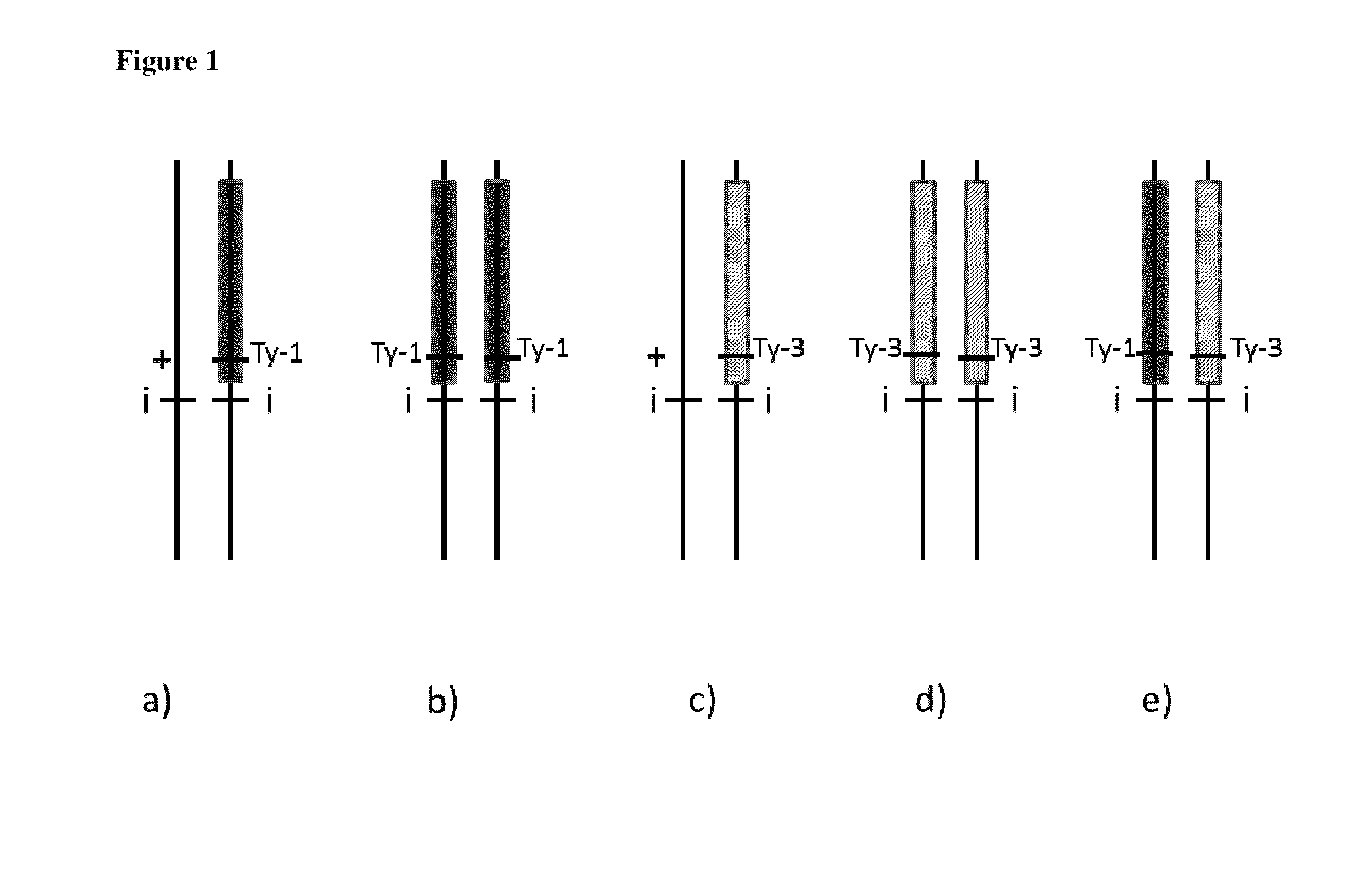Tomato Plants with Intense Phenotype and TYLCV Resistance
a tomato and phenotype technology, applied in the field of plant breeding, can solve the problems of tylcv resistance, ty-1 occurrence, leaf curling and flower abortion, and contradictory results, and achieve the effect of reducing the likelihood
- Summary
- Abstract
- Description
- Claims
- Application Information
AI Technical Summary
Benefits of technology
Problems solved by technology
Method used
Image
Examples
example 1
1.1 Materials and Methods
1.1.1 Population Development
[0099]Individuals of an inbred L. esculentum line comprising two copies of the mutated gene conferring the intense phenotypic trait (i.e. homozygous for intense; belonging to the inbred LH 8587*SR 97180-0-S-3-8) and susceptible to TYLCV, were crossed with a L. esculentum hybrid (Hy006, lacking the mutant intense allele) selected in Jordan as resistant to the virus. Resistance was confirmed by molecular analysis to be conferred by the Ty-1 gene, carried in heterozygous form.
[0100]Both parents were selected as carrying a similar fruit shape (elongated) and for the determinant plant habit which made it easier to grow progenies in a large number in the open field.
[0101]The F1 population was grown in number of 100 individuals, all carrying the mutated intense allele in heterozygous form (thus having a normal fruit phenotype) and segregating for the Ty-1 gene in a ratio of 1:1. The F1 progenies were thus segregating genotypically in a r...
example 2
Transfer of the Recombination Event into Another Variety
2.1 Materials and Methods
[0114]The original cross was already involving high value parents. It was decided to go on with the populations homozygous for Ty-1 and intense (above) and do a strong selection using pedigree method to fix possible parent lines to be used directly in hybrid combinations.
[0115]At F5 stage the progenies were tested in few combinations to check their combining ability. At F7 stage few lines were fixed and crossed to intense parent lines to generate hybrids to evaluate in screening level.
[0116]In particular the progeny LH 56237-15-2-1-3-1-0-10-0 (Ty-1 / Ty-1, i / i) was selected, which was crossed with another intense inbred parent line (susceptible to TYLCV) in order to generate the hybrid deposited under accession number NCIMB 41930.
[0117]The hybrid and the inbred parents were tested for TYLCV resistance, both under natural infection (exposing seedlings to natural infection and leaving whiteflies free to mul...
PUM
| Property | Measurement | Unit |
|---|---|---|
| weight | aaaaa | aaaaa |
| weight | aaaaa | aaaaa |
| weight | aaaaa | aaaaa |
Abstract
Description
Claims
Application Information
 Login to View More
Login to View More - R&D
- Intellectual Property
- Life Sciences
- Materials
- Tech Scout
- Unparalleled Data Quality
- Higher Quality Content
- 60% Fewer Hallucinations
Browse by: Latest US Patents, China's latest patents, Technical Efficacy Thesaurus, Application Domain, Technology Topic, Popular Technical Reports.
© 2025 PatSnap. All rights reserved.Legal|Privacy policy|Modern Slavery Act Transparency Statement|Sitemap|About US| Contact US: help@patsnap.com



